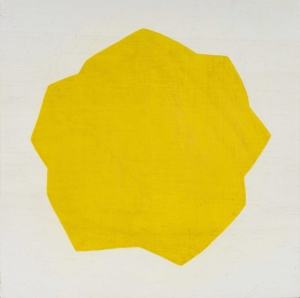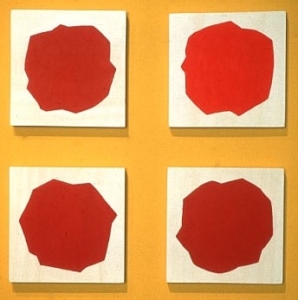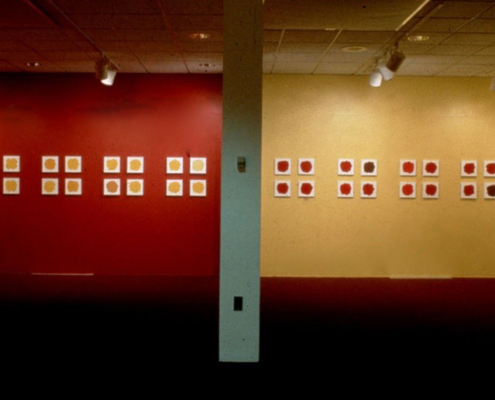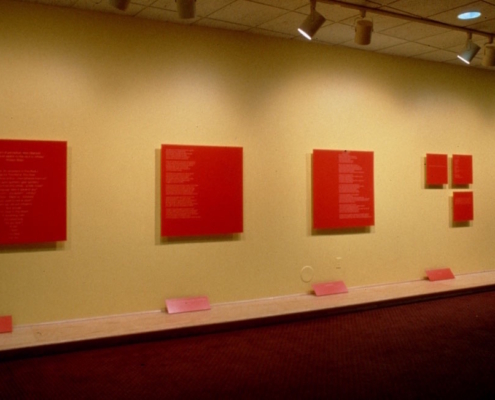A 2000 exhibition project on how proximity and conversation affect identity and meaning.
As Exhibitions Director of Stevenson University Art Gallery, Peter discovered first-hand the extent to which an art object’s meaning is affected by how it is situated: wall color, exhibition theme, programming, and gallery conversation all act as filters through which individual works of art may be understood.
Mirroring his curatorial experiences at Stevenson University, Conversation Piece was a philosophical exploration of identity: When do distinctions between communal and individual identity become obscured? What impact does context have on meaning? How does conversation throw identity and authorship into question?
“Bruun’s humanistic approach to the nature of his work, his collaborative vitality and ‘conversations’ provide a lively and thought-provoking show. The context moves his paintings beyond a first impression of repetitive minimalist abstraction into the realm of community property and genuine interaction.”
—Jack Livingston, PeekReview, July 24, 2000
ARTWORK
Peter’s art objects for Conversation Piece were 80 paintings created within strict parameters related to color, shape, and number: 40 paintings in four different yellow hues, and a corresponding set of 40 paintings in four different red hues—all derived from Peter’s methodology based on self-portraiture. Each set of 40 was comprised of ten subsets, each with four paintings similar in contour to one another—a thematic shape to each subset. The 10 subsets within the red and yellow sets also mirror one another in their shapes and tones—in other words, each red subset of four paintings had a matching subset of four in yellow; a kind of doppelganger relationship.
EXHIBITION
Conversation Piece was held at Goucher College’s Rosenberg Gallery, located in the lobby outside of the college’s Kraushaar Auditorium. Since many viewers of the exhibition were standing in the lobby before and during shows, it was a perfect location for an exhibition playing on conversation; the art served as literal conversation pieces. For the exhibition, Peter painted the gallery walls red and yellow, reinforcing the sense of symmetry and dialectic throughout. As a final layer of conversation between elements, one side of the lobby housed Peter’s paintings, and its opposite displayed the works his collaborators created in response. In its layering of classifications and recurrent mirroring, the exhibition challenged the idea that objects (or anything at all) can be understood distinct from context. Like nesting dolls in reverse, the exhibition offers one interpretation of identity after another in an ever-broadening field of play and interaction—of ongoing conversation.
PARTICIPANTS
Conversation Piece’s primary collaborators were college writing students who wrote prose and poetry in response to Peter’s paintings, and designers Franc Nunoo-Quarcoo and Maria Phillips, who created signage to display the students’ writing on the wall facing Peter’s paintings. The written pieces functioned as commentary (conversation) on Peter’s works, serving as an influence on how viewers might read the works: perceived identity thus becomes a function of conversation.






